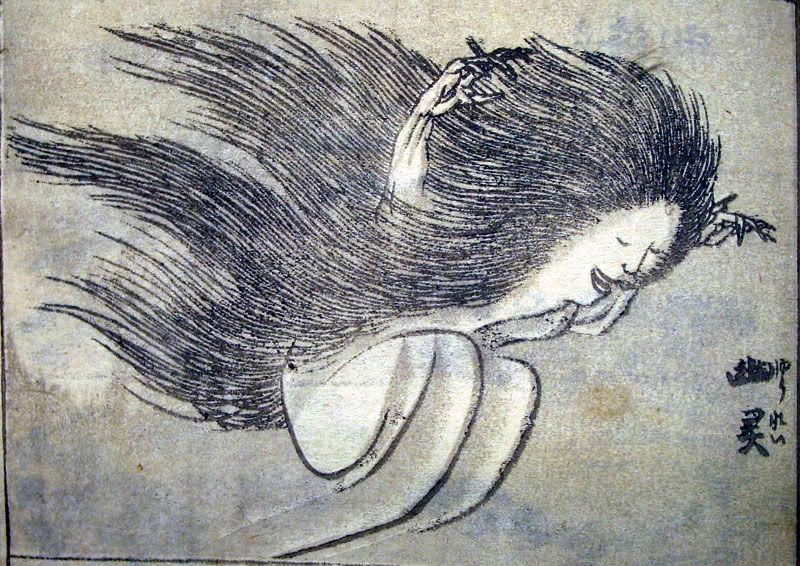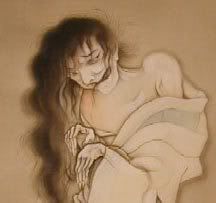
We’re all familiar with them after the J-Horror fever that swept America a few years back.
The classic yurei have vile black hair, and 'wear' a long white or pale blue dress. In some traditions, this is a burial kimono. You'll also recognize them by their hands which dangle lifelessly in front of you. The imagery to represent a yurei goes back centuries.
One of the significant depictions is attributed to the 17th century artisan Maruyama Okyo, who painted the Ghost of Oyuki below. Often, yurei have a few hitodama or floating flames hovering around nearby.

As in the Southeast Asian traditions of the phi, there’s many forms of yurei. Some are vengeful spirits returned from purgatory. Several are mothers who died in childbirth. A few are angry aristocrats, victims of the sea, a few children and samurai. You'll also run into the occasional seductress.


Depending on your sources, they often appear on rainy nights around 2 in the morning. The phrase “urameshiya” is frequently connected with yurei, who repeat the word and their grievances with you.
Yurei say “urameshiya” because it translates, roughly, into something relating to curses, discontent, you know, all the usual reasons for haunting. And because it sounds creepy as **** if you say it right.


No comments:
Post a Comment